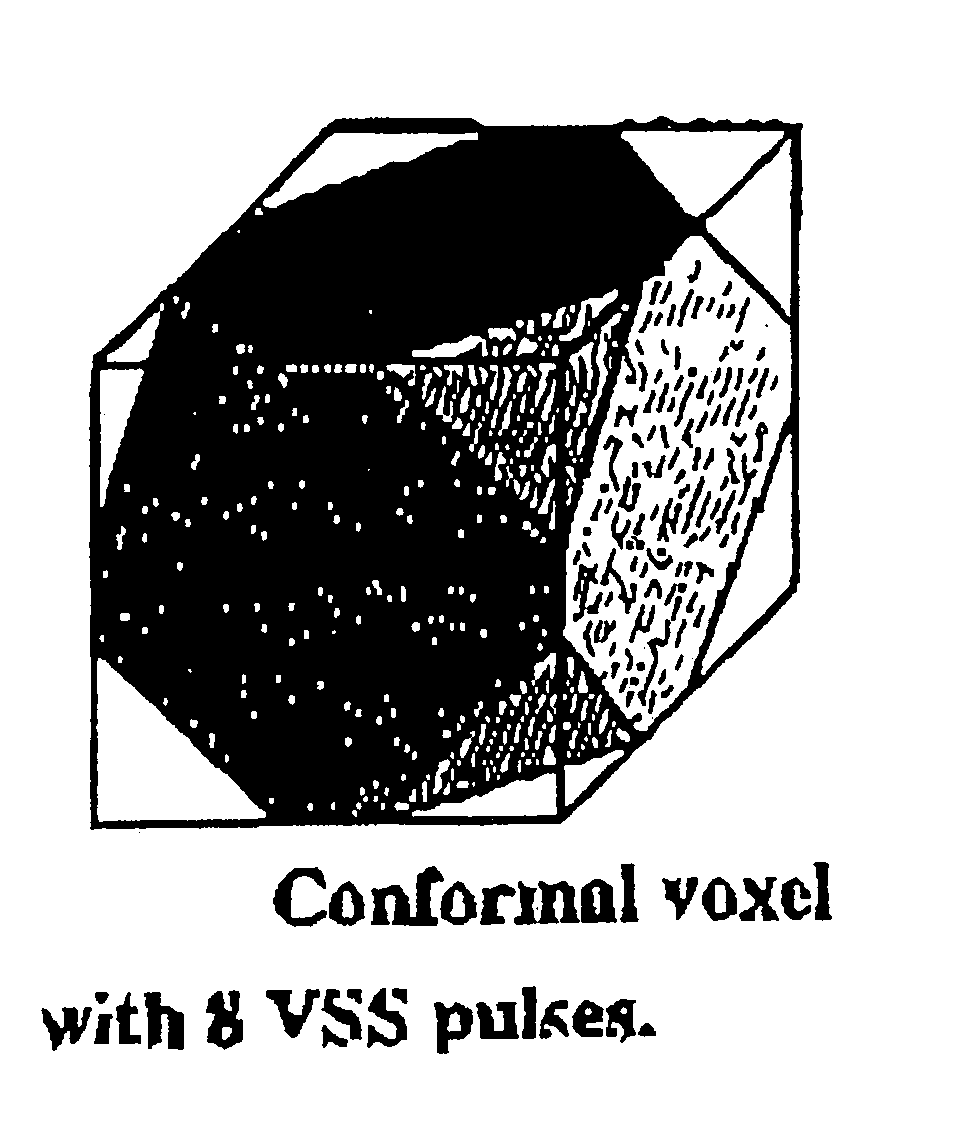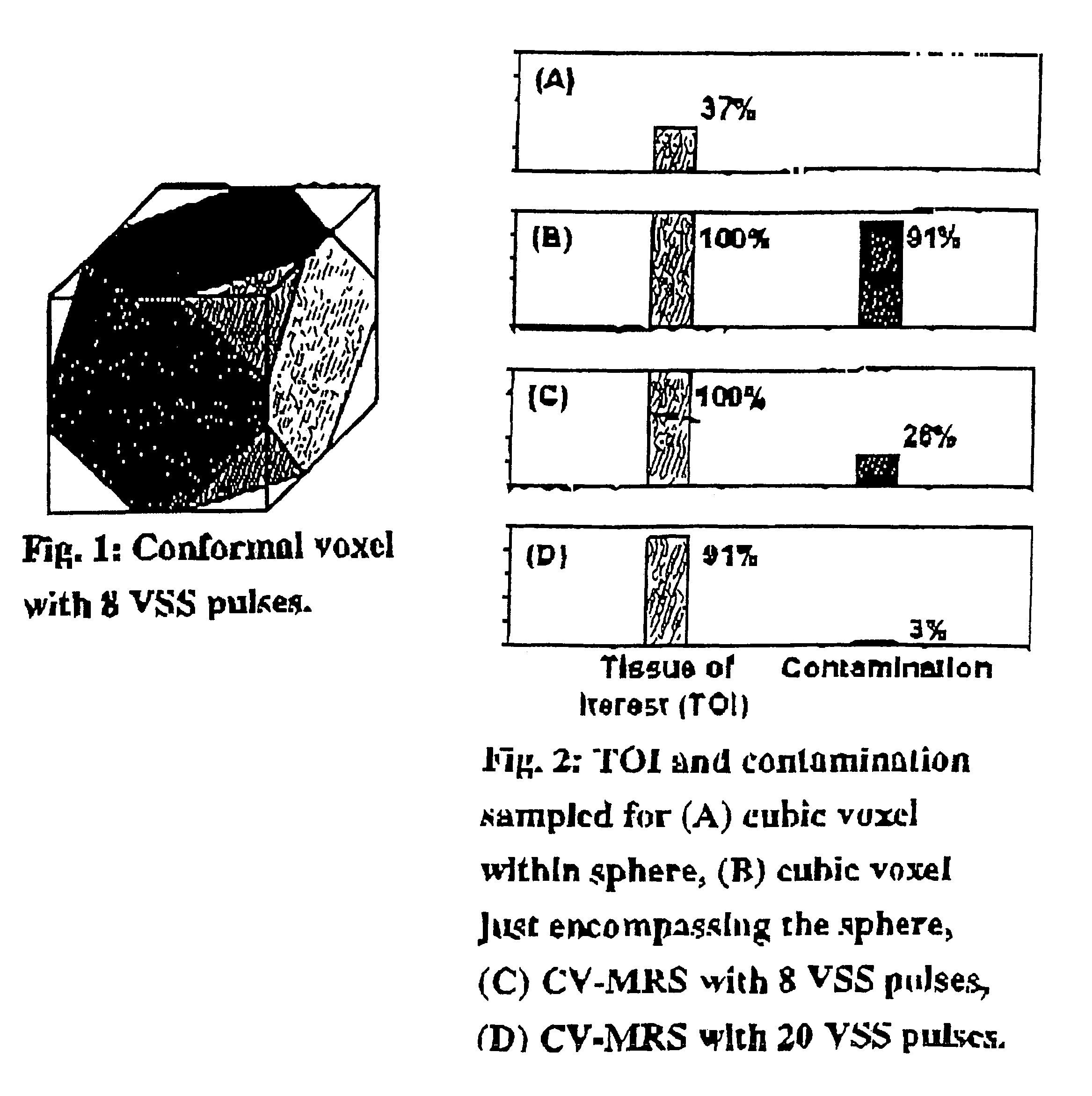Magnetic resonance spectroscopy using a conformal voxel
a conformal voxel and magnetic resonance technology, applied in the direction of static indicating devices, using reradiation, instruments, etc., can solve the problems of not contributing to the mrs spectrum, techniques are not suited for use as a primary localization technique, and regions of tumors are not sampled
- Summary
- Abstract
- Description
- Claims
- Application Information
AI Technical Summary
Benefits of technology
Problems solved by technology
Method used
Image
Examples
Embodiment Construction
[0035]A series of images is acquired using magnetic resonance imaging. The images are of thin, closely spaced slices along any axis. The field of view of all the images is large enough to completely contain the VOI.
[0036]The images are automatically extracted from the MRI scanner computer and are displayed on a computer terminal.
[0037]The user can locate a point in the VOI, and the program automatically finds the entire VOI in all the slices using conventional image analysis techniques well known to persons skilled in the art of image analysis. For example, image analysis techniques include MR image segmentation and seed-growing algorithms.
[0038]If desired, the user can manually define the VOI directly on the image using a computer interface.
[0039]If desired, the computer program or user can also define volumes of exclusions (VOE), a region, e.g., subcutaneous lipid layers, to be minimally (or not) included inside the cuboidal excitation voxel (created using a localizing sequence li...
PUM
 Login to View More
Login to View More Abstract
Description
Claims
Application Information
 Login to View More
Login to View More - R&D
- Intellectual Property
- Life Sciences
- Materials
- Tech Scout
- Unparalleled Data Quality
- Higher Quality Content
- 60% Fewer Hallucinations
Browse by: Latest US Patents, China's latest patents, Technical Efficacy Thesaurus, Application Domain, Technology Topic, Popular Technical Reports.
© 2025 PatSnap. All rights reserved.Legal|Privacy policy|Modern Slavery Act Transparency Statement|Sitemap|About US| Contact US: help@patsnap.com



